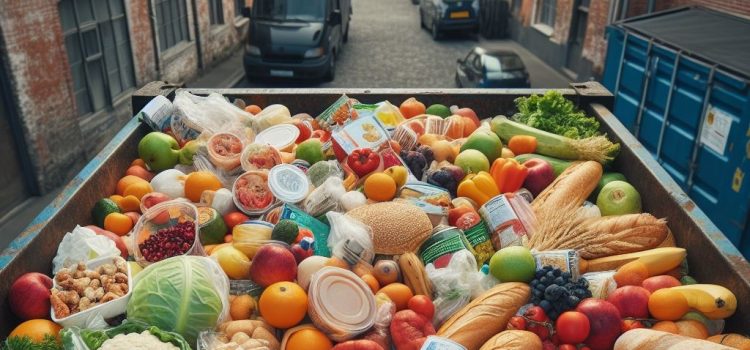
Do you want to help fight world hunger? What are ways scientists can help us stop wasting food?
Peter H. Diamandis and Steven Kotler note that traditional agriculture methods lead to waste in both production and consumption. A lot of food goes uneaten, yet many people still can’t find food to eat.
Learn how to combat food waste to reduce food insecurity.
How to Reverse Wasteful Production and Consumption
Diamandis and Kotler note that traditional agriculture methods lead to waste in both production and consumption. In the United States, only 60% of the food that’s produced is actually eaten—the rest is either left unharvested or is thrown out by consumers. Yet, despite the fact that the country produces vastly more food than it consumes, many people struggle with food insecurity.
(Shortform note: There are two common yet avoidable reasons why people throw out good food: First, people often discard foods that are edible but look imperfect—research shows that over 20 billion pounds of “ugly” food goes to waste every year in the United States. Second, people misunderstand expiration labels. One study showed that people were more likely to throw out food if the label only had a date or if it included the word “use” (such as “best if used by”). Because of this, experts advocate standardizing food labels and clearly informing consumers of their meanings.)
The authors discuss two innovations to help scientists learn how to combat food waste:
1. Improving photosynthesis. Researchers are exploring ways to increase crop yields by enhancing photosynthesis—the biological process carried out by plants that allows them to turn light energy (usually from the sun) into chemical energy in the form of glucose. Currently, all foods we eat depend on this process—we eat either plants or animals that eat plants. The problem is that photosynthesis isn’t efficient: Less than 1% of sunlight that reaches earth is photosynthesized. To confront this, some researchers have figured out how to genetically modify plants to have higher levels of a protein that aids in photosynthesis, allowing plants to harness more of the available solar energy and produce larger harvests.
(Shortorm note: Scientists are not only working on optimizing photosynthesis in plants, but they’re also researching ways to grow food without the need for sunlight altogether—a method called artificial photosynthesis. This method changes water, carbon dioxide, and electricity into a substance called acetate. Plants that consume this acetate can grow in complete darkness. This method of food production can be up to 18 times more efficient than the traditional sunlight-dependent method of growing food. Scientists have successfully tested this method with different organisms like green algae, yeast, and mushrooms, as well as crops like tomatoes and peas.)
2. Developing artificial cutin. Fruits and vegetables produce a material in their peel called cutin that protects them from spoiling. Scientists have manufactured an artificial cutin that’s organic and can coat food to provide an extra layer of protection, preserving the freshness of foods longer. This helps prevent food from going bad before we can eat it, reducing waste.
(Shortform note: While artificial cutin may be a new development, coating foods to preserve their freshness has a long history: Chinese farmers in the 12th and 13th centuries used to pack their citrus fruits with wax, and the Japanese coated their foods with an edible film called yuba created from boiled soy milk. Today, many foods we consume are coated in waxes made from materials like sugar cane, beeswax, carnauba (wax from a type of palm), and resins.)






